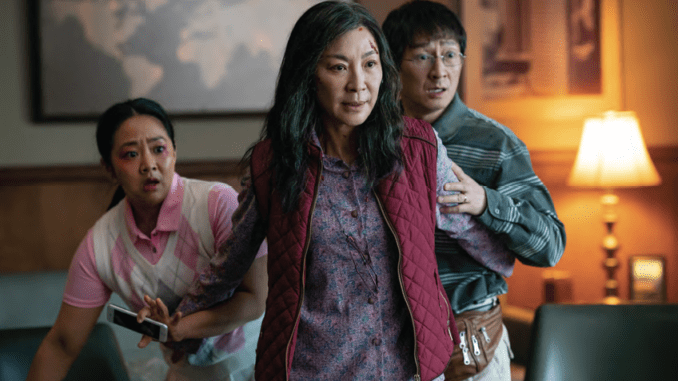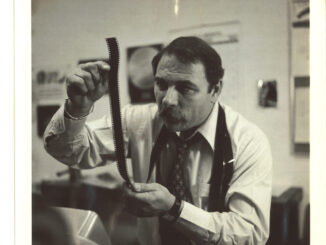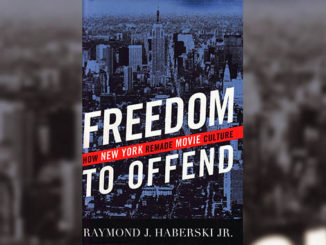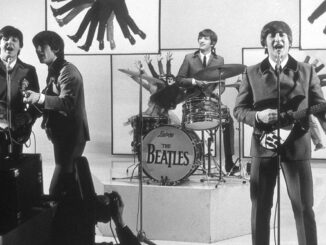
By Jennifer Walden
Re-recording mixers spend weeks with a director agonizing over every detail of a film’s soundtrack — choosing when to push the effects hard, making sure lines of dialogue sit just right in the mix, and deciding when to let the music be big and bold. A well-crafted mix not only captures the director’s artistic intent for a film; it’s an expression of the mixer’s artistry, as well. They make decisions on acoustically-treated and precisely-tuned dub stages that are recalibrated regularly to ensure the mix will translate in theaters and deliver the director’s intended experience to the audience — that is, if the theaters play that mix at the proper reference level. What if the fader is set too low? How will that affect the audience’s experience of the film?
“On the creative side, we’re very fortunate to work on mixing stages that are built and calibrated to provide the best theatrical experience possible,” said re-recording mixer Tony Lamberti at Sony Pictures Studios in Culver City, California. “We get to hear the movies at the exact perfect levels all the time. It spoils us a bit. Ultimately, we want our projects to go out into the field and translate so that people can experience it exactly as we do.
“But then our clients go to see their movies in the cineplex and say, ‘Wait a minute. It doesn’t sound like it did on the mixing stage.’ That’s because some theaters exhibit movies in less-than-ideal conditions; the rooms aren’t always spec’d out, or the speakers aren’t checked for long periods of time, so they either fall into disrepair or aren’t up to snuff. It’s very difficult; essentially, you hand over your baby to the exhibitors, and it’s up to them to make sure it’s presented properly,” Lamberti said.
This uncertainty is a source of anxiety for theatrical re-recording mixers, according to Michael Babcock, CAS, at Warner Bros. Post Production Creative Services in Burbank, California, who finds going to theaters to be a nerve-wracking experience. “I know it’s not playing at reference. I walked through the projection room at one multiplex in Orange County where the faders were set between 4.2 and 4.9! I find it extremely frustrating, even when watching movies that I haven’t worked on. I know it’s playing low and that it’d be great to accurately hear the creators’ inspired work. That’s part of the fun. It’s actually why, as a film mixer, I’ve been watching films at home more often these days. I can control my volume knob. I know that the room is tuned correctly and that my subwoofer is powerful enough,” he said.
REFERENCE LEVEL 7
Why aren’t theaters playing films at reference level? The issue of theatrical playback levels has plagued the film industry for many years. In fact, it was covered by Matt Foglia, CAS, in “Film Loudness Levels Challenged” for the Summer 2014 issue of CAS Quarterly. Most recently, it’s come to light publicly with audiences complaining about low dialogue levels on a newly released animated superhero film. A producer on the film was very vocal in encouraging audience members to ask their local theater’s projectionist to play back the film at reference level 7 because this is the level at which the film was mixed.

“Reference level 7” isn’t a random setting that one producer prefers; it’s the industry norm. But what does “reference level 7” mean? Theaters using a Dolby Cinema Processor for playback should set the fader level to 7.0. In a properly calibrated theater, level 7.0 will play the film back at the same reference level at which the film was mixed. According to the Dolby website, “Dolby Atmos mix rooms should be capable of reproducing 85dB C from each speaker at the mix position. Calibrating your room to 85dB C means sending a -20dBFS pink noise signal to a single speaker and adjusting the loudspeaker levels (and, if required, frequency response) until the speaker produces 85dB SPL when measured with an SPL meter, C-weighted, slow, measured at mix position.” This is the standard calibration for professional theatrical dub stages, so decisions about dialogue, music, and effects levels are made while the film is playing back at 85dB SPL. For the audience to hear the intended mix, it should be played back at that same level.

Two-time Oscar-winning sound supervisor/re-recording mixer Mark Mangini, MPSE, at Formosa Group in Hollywood, California, said, “As sound professionals, we can hear that films we’ve mixed are not playing correctly at certain theaters. I’ve even seen the memos from the corporate offices of these exhibitors stating that the projectionist or the theater chain shall not play films in those theaters at the level intended but should play them at a reduced level. Most theater chains specify that it should be reduced to a fader level of 6 or 5.5. For every whole digit on the Dolby fader, you lose three decibels of playback volume.” While 3dB doesn’t seem like a lot, it’s a noticeable difference. Consider that a change of +/- 6dB SPL is perceived as a 50% increase/decrease in volume. “If the projectionist sets the Dolby fader to level 5, the film is playing approximately 6dB down or about half as loud as you mixed it,” explained Mangini. ‘
THIS MOVIE IS TOO LOUD’
Are exhibitors opting for lower playback levels because audiences feel the sound is too loud overall? Or is it just one overly loud moment that ruins the experience? “You could have a perfectly listenable film, expertly mixed, but it might only take one extraordinarily loud moment — like a gunshot, an explosion, or a music sting on a horror shock — that sends a patron to the lobby saying, ‘This movie is too loud.’ Of course, there is also the fact that some movies ARE too loud,” Mangini said. “It would appear that there is no economic incentive to play movies at the level they’re supposed to play because of the complaints a theater may get from one…or many patrons. As such, we must ask ourselves as creatives, are we making movies too loud?”
What the audience hears in the theater or at home is often anyone’s guess.
Sound supervisor/re-recording mixer Brent Kiser, CAS, MPSE, owner of Unbridled Sound in Los Angeles, California, noted that people watch films at home more than they do in a theater, so the nearfield mix (with less dynamic range and louder lines of dialogue) is what they’re used to. “That’s what the viewer experiences 90% of the time. So on bigger action films, when the director really wants you to feel like you’re in that loud environment, it can feel very unpleasant in a theater at 85dB. Are these movies made with only the director in mind or is it about designing a pleasurable experience for the moviegoer? At home, a viewer can turn down the volume to be more pleasurable, but when you’re in a theater with a hundred people, you have to average out the taste level of the viewers. If the viewers keep asking to turn it down and there is no option for that, then there will be even fewer people going to the theater. That is something I would hate to see,” he said.
Should mixes be made with the audience in mind? Or should they be what the director wants the audience to experience? As Kiser explained, it’s a question of art versus profit. If the movie industry is a business, should the audiences’ tastes trump the filmmakers’? Lamberti answered, “Most directors I’ve worked with are very cognizant of the audience and want the audience to enjoy the movie because if the director wants to keep making movies, they have to have successful movies. If a lot of people go see their movies, then they get to make more movies. Plus, there’s nothing more gratifying than having something you’ve worked on go out into the world and be super successful, knowing that a lot of people saw your work and enjoyed it.”
‘WHAT DID THEY SAY?’
Part of making a film enjoyable is having a mix that will appeal to theatergoers, but in the case of the aforementioned animated superhero film, some audiences weren’t hearing the mix as the filmmakers intended. So is there anything a mixer can do to make sure their mix will translate to different theaters, even if it’s played at a lower volume?
Lamberti answered: “There is a school of thought that says to mix a little bit hotter because you know it’s going to get turned down. So, if it was a dialogue-driven movie, you would maybe play the dialogue just a little bit hotter than you normally would because you don’t want the audience to say, ‘What did they say?’”
Babcock admitted that hotter mixes happen. “Sometimes we may oversell a sound story point — like a jump scare or a piece of dialogue or a weird sound that hints to where the plot goes next — just to make sure we hammer a point home. I admit I’m sometimes guilty of creating hotter mixes, but try not to overdo it. My hope is to create a mix that will provide all the important details even if you turn it down, to make sure the audience is getting the entire story,” he said.

Lamberti will sometimes test a mix at a lower monitoring level to make sure it still sounds impactful. So does Kiser, who mixes indie films such as last year’s hit “Everything Everywhere All At Once.” Kiser said, “I’ll pull the room down to 82dB so we can feel the ratio of the dynamics at a lower volume. With my theatrical mixes, I have to make sure they translate to small screens because on indie films we rarely get the budget for a nearfield pass. So we always try to shoot the center, with -27dB on the dialogue.”
‘We’re at the mercy of exhibitors.’
Making hotter mixes to combat lower levels in theaters is a slippery slope, warned Lamberti. “You can’t do that with the super loud elements because if they do play it at level, then it’s going to hurt.”
Mangini agreed. “A mixer’s reflex response might be to just mix the film louder. But what happens when that film plays at a proper theater that will play the movie correctly? The audience will be bombarded with a film that is 6dB too loud. You’d be embarrassed (and likely scorned) for mixing a movie that loud. It’s a conundrum. You’re damned if you do (mix the movie too loud), and you’re damned if you don’t (and the audience doesn’t hear the film as intended). The solution, for me, is simply to mix a film correctly and never second guess your audience or the conditions under which it would be played.”
Babcock said, “I wish we weren’t mixing hotter because some of the complaints about dialogue intelligibility would likely go away if films were played at reference; some of the complaints about films being too loud might go away if filmmakers knew they would be played at reference.”
So what is a mixer to do? Lamberti advised, “The only thing we can do is stick to our tried and true reference level that has been established for decades with the hopes that it will go out into the field and be okay. We just have to lean on our experience of mixing films that have nuance, with ebbs and flows. We can make the big moments big without hurting people and have softer moments that can still be heard. Then, we send that out into the world and hope for the best. It’s up to the exhibitors to show that in the best way possible. We’re just at the mercy of the exhibitors.”
‘EVERYTHING OUT OF WHACK’
Think of the standard reference level as the central point of a spinning plate. If one side of the plate shifts away from that central point, the plate wobbles. Everything becomes out of whack. Adhering to a standard reference level should take the guesswork out of where to set the playback volume for both mixers and exhibitors, but with exhibitors lowering the volume and mixers compensating by making hotter mixes, the system has become unbalanced. Do the two sides no longer agree on what the reference level should be?
The current reference level is 85dB SPL. OSHA’s permissible exposure limit (PEL) for noise is 90dBA for an eight-hour time-weighted average, so this is a safe level for mixers working an eight-hour day. But how many mixers work only eight hours a day? Could lowering the reference level be beneficial for mixers, exhibitors, and audiences?
If the reference level was lowered, consider that theatrical releases play in rooms (potentially) filled with people. “If it’s too quiet then you might miss something because somebody is sneezing, or talking too loudly, or eating snacks too loudly,” said Kiser. “As a mixer, you always have to worry about translation because once the film leaves the dub stage, we have no control. If you’re losing dialogue because the theater is not playing at the standard reference level, that’s a problem. That’s why I changed how I mix to make sure it translates in spaces large and small. I know my mix will play at 50dB, 70dB, and 85dB. Mixing that way means I can’t push the boundaries as hard, but are we making art films? Or are we making films that are meant to make money? Who gets to decide? The viewer. And if the viewer says, ‘Turn it down.’ It’ll get turned down.”
What about setting a loudness standard for theatrical releases (akin to TV broadcast/streaming releases but not the same specifications)? As Kiser pointed out, “There is no legal standard, so the projectionist always has the choice to do what they want with their room, to make a decision on playback level based on the audience at the time. But they might set a level for a less-crowded afternoon showing and that doesn’t get reset for later shows.”

Mangini said that “the creative community can be more conscientious, as can the exhibitors. Perhaps there is a solution where exhibitors agree to some kind of playback standard and we, the filmmakers, find new ways to adhere to it. Maybe there’s an alliance between exhibitors and the creative community where we promise to adhere to a loudness standard, as broadcast does. Or, if there was an official seal-of-approval that promises you (the audience member) that this film won’t be too loud or too bright, then you can select that cinema and know you’ll be happy with the experience. Or, perhaps theaters agree to advertise that a film will be played ‘as intended’ and this works as a bellwether/catnip for those put off by loudness to avoid those theaters and attracts those who know to look for a properly aligned theater.”
‘Once the film leaves the dub stage, we have no control.’
Proposing a loudness spec for DCPs (digital cinema packages) may make some mixers cringe, but Babcock concedes that the adoption of “The TASA Standard,” which sets the upper volume limit for theatrical trailers at 85dB Leq(m), has improved the moviegoing experience. He said, “Before the TASA Standard, if a projectionist set the theater level based on overly loud trailers, then the movie would sound too low,” he said. “While my snap answer is no, we shouldn’t have loudness standards for theatrical releases, a standard that prevents a theater from going over some agreed-upon peak level might be a good thing. Many live concert venues have a peak standard of around 110dB. (And it needs to be said, most exhibitors play movies at a much lower level than a Taylor Swift concert!) That doesn’t necessarily change the dynamics or the EQs or the frequencies that you’re hearing but it provides a general level of protection. Maybe that’s something to explore.”
Babcock added, “As filmmakers, we should be conscious of those peaks, so they’re not being used too much and it becomes relentless. That’s something we discuss on a dub stage: Is this too much? Is this too fatiguing? Movies are done pretty tastefully these days. So if there is to be a loudness standard, it needs to be one that wouldn’t restrict our approach to mixing too much.”
But how long could a “peak” be? And what happens if a peak exceeds that time limit? “If there’s a chase scene where a car goes off the cliff and smashes and crashes and it exceeds the peak time limit, how do you turn it all down?” asked Lamberti. “Also, we’d need to be able to measure loudness peak and duration. So that’s a hard one, but maybe it has to get there. Maybe that’s the thing that has to get reined in.”
‘WE NEED TO FIGURE IT OUT’
Filmmakers, exhibitors, and audiences can all agree on one thing: going to see a film at the theater should be an enjoyable experience. But finding a way to make that happen is going to require a multi-point solution. “It’s an industry problem, so as a collective, we need to try to figure it out,” said Lamberti.
While working with Director Sam Green on the documentary “32 Sounds,” Mangini and Green found it helpful to send out a letter from the distributor with every DCP that said, “’32 Sounds’ is a very special film; it lives and breathes through sound and its proper reproduction. We ask and encourage you to please play the film at the standard level and promise you that we have been conscientious about making a soundtrack that should be pleasing to everyone [and] offend none.”
Mangini said, “By sending a letter with each DCP, we felt we could retain our artistic integrity by maintaining a mix that we all believed in, and reassure the exhibitors so they’d feel comfortable enough to play the film properly.”
While this type of artist statement isn’t uncommon, Mangini noted, “I don’t think a lot of filmmakers are even aware that cinemas are playing their movies below reference. We can do better as a creative community by being aware of what’s going to happen in the cinema.”
Babcock agreed, “It’s important for exhibitors to have relationships with the filmmakers. Part of a solution is having directors be aware of this issue, and having them very publicly ask theaters to play it at reference level. Hopefully, that kind of pressure and having people being aware of this issue will help.”
Exhibitors that choose to play films below reference level should be aware of how that affects the mix and the audience’s experience. “We’re at the mercy of the exhibitors to care enough to make sure that all the rooms are playing properly and that all the staff is trained. Maybe a projectionist training program is a solution? Maybe the studios or the guilds would sponsor a program for projectionist certification, so that projectionists have to go through training before they’re hired, to understand why things need to be set the way they are. That’s important,” said Lamberti.
Another solution is room standardization — having theaters more closely mimic the mixing environment. “You’re mixing for the room in the hopes that, in a properly-calibrated theater, it’s going to play very similarly. We’re making our creative decisions based on that. Dolby and IMAX have developed a relationship with theater chains and have high standards. They’re part of the process of building a theater or retrofitting a theater, and they tend to do it right. Dolby and IMAX have some control, from a distance, of how a theater sounds,” said Babcock, who did the IMAX mix for “Halloween Ends.”
IMAX uses in-theater cameras and microphones to automatically calibrate the projector and sound system between each show. Babcock added, “If a speaker goes out in an AMC Dolby Cinema theater, the system will phone home and say, ‘Hey, a speaker’s gone out.’ That is part of the solution, having communication between the theater’s playback system and a quality control hub. You know those are going to be calibrated as much as they can be, so they’re going to play at reference level, and you’re going to see the picture correctly. I only hope that other theaters recognize the benefit of giving the audience a great experience.”
But asking that every exhibitor retrofit their theaters to meet a specific standard is a tall order. “Exhibitors are the ones who would have to bear the cost of improvement, but they’re in such bad shape financially right now coming out of the pandemic. How do you convince them to make sure their theaters are up to spec?” asked Lamberti.
Kiser added, “There’s no way a theater in Garrard County, Kentucky (population 17,000) is recalibrating their room every day, or can even afford to do that, because how many tickets are they actually selling?”
Could one future solution be room mapping software that will automatically recalibrate the theater’s speakers to reproduce the sound as it was on the dub stage? “I think that’s ultimately where it should probably go. Let’s take that part of it off the projectionist’s plate and make it a part of the film delivery. So when the film first gets played, that tone mapping or calibration map is run for a particular film. It’s embedded in the DCP. Then that information gets sent to the speakers’ calibration software and it’s played as intended. That’s probably the best solution and probably something that everybody could get on board with,” said Lamberti.
He also noted that getting filmmakers and exhibitors to agree on the best technology to make that happen will be no easy feat. Lamberti said, “You’re talking about doing research. You’ll have to do focus groups to find out what levels are best for the majority. If the unions are driving it, you could get people on board with that very easily. But when you start bringing all the other components in, how do you make that happen? There are a lot of moving parts.”
‘WHAT PAYS THE BILLS’
While this article offers up more questions than solutions, it’s done in the hope that a serious discussion will happen between the filmmakers and the exhibitors.
As Babcock stated, “The future of going to theaters is not completely set in stone, and I feel like there’s an opportunity here to do something about it. Playing movies the way they’re supposed to be heard and seen makes each screening an ‘event,’ helping to ensure the future of going to a theater.”
“It needs to get figured out because it’s been an issue for a long time. It’s going to take all parties to come to the table and be part of the solution, exhibitors included,” added Lamberti.
Kiser, speaking from the indie side of the film industry, concluded, “At the end of the day, how long do these movies play in theaters and then how long do they live on in streaming? They’re available on streaming forever. For the indie film industry, the theater is a blessing, but I have to get the film prepared for streaming because that’s what pays the bills.”
Jennifer Walden is a freelance writer specializing in post-production technology.





